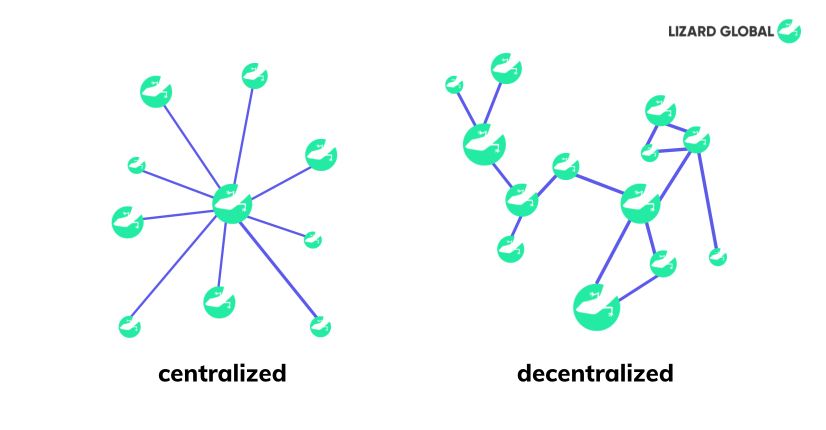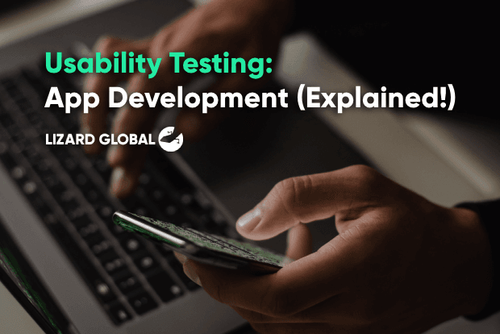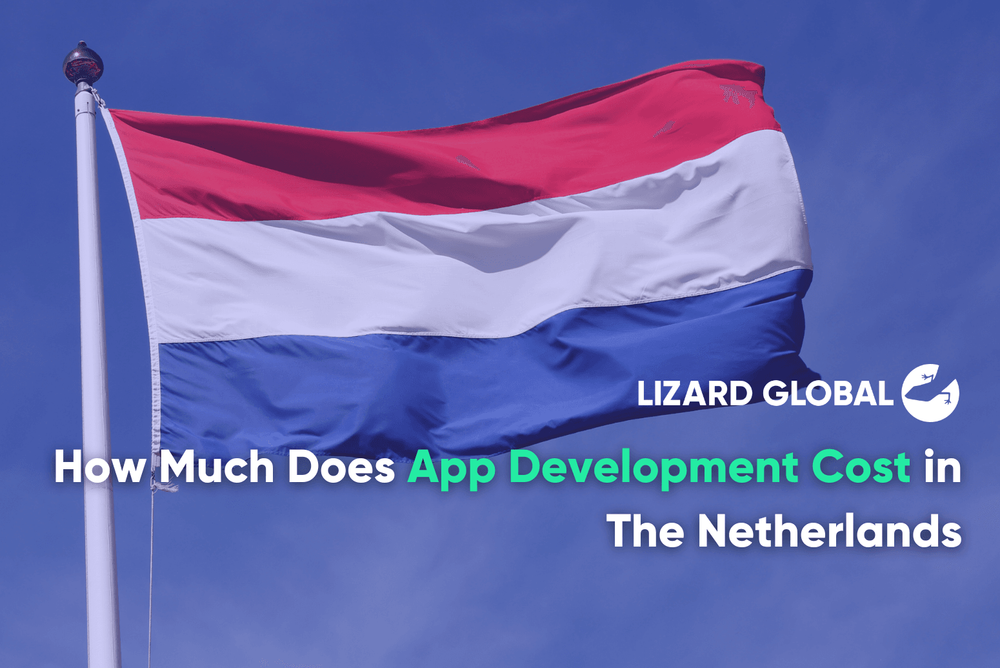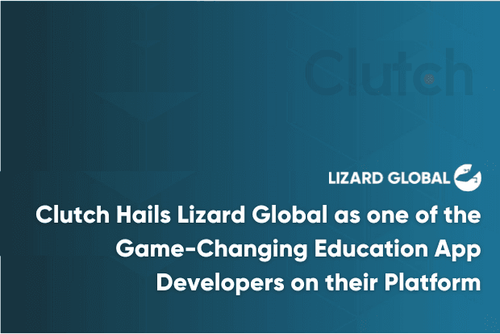All You Need to Know About Decentralized Applications
Get the latest updates about our blog posts.
Subscribe so you don’t miss out!
Blockchain is booming, and with the rapidly increasing popularity of the use of blockchain technologies for a wide variety of digital solutions, the world of app development needs to keep up. In this blog, we dive into a rather new phenomenon: blockchain apps, or so-called decentralized apps (dApps). Say what? Don’t worry, this article answers the most essential questions to get a good grasp of blockchain applications and their benefits.
What is a dApp?
Let’s start from scratch with a concrete definition of the term “dApp”, which stands for “decentralized application” and can be defined as a decentralized network-based program or application which forms a counterpart of regular, or centralized applications. DApps are a set of smart contracts that are linked together. Each smart contract performs a specific job inside the application, behind the scenes in the backend. It's important to understand that dApps usually resemble traditional apps, yet they're based on blockchain technology. Generally, we can list three things that make a dApp different from a normal application:
- A dApp must always be open-source and decentralized, operating on its own without anyone controlling it;
- The data and records within a dApp must be publicly accessible at all times;
- The app requires the use of a cryptographic token to ensure the security of the network.
Not sure how blockchain technology works? Then you might want to check out this blog first.
What does “decentralized” mean?
Undeniably, the term “decentralized” plays a core role in blockchain applications. But what does it mean exactly? Most apps nowadays run on networks that are controlled by a central authority. Social media platforms, banks, and streaming services, for example, store your data on centralized servers. When you use these applications, a request is sent to their servers, and the response is returned to you if your credentials such as your username and password are correct. While this way of centralizing online exchanges between the provider and consumer is efficient, it results in massive volumes of user data, often personal and private, controlled by a few very large corporations. The fact that your personal information is in the hands of a big tech corporation like Google and Amazon who are also profiting off it, means that that information is exposed to breaches and intrusions.
These flaws in data privacy in centralized networks increased interest in privacy-preserving solutions, such as blockchain technology and dApps. Like many other current blockchain solutions, dApps aim to cut out the middleman and “decentralize” the ownership of the application. If you currently book a ride on Uber, you don’t just pay the person who is driving you from A to B. There is an intermediary party that takes a sizeable cut out of this exchange, which makes the service more expensive for users while making drivers earn less than when they would drive independently. With dApps, this need for an intermediary party is eliminated. All transactions, in whatever form, are done between the provider and consumer and are registered on the blockchain.

What are dApps used for?
DApps form a connection between current Web 2.0 platforms and Web 3.0, the future of the internet in which decentralization plays a core role. Because blockchain technology is still relatively new, there are fewer dApps than regular apps. However, an ever-continuing stream of innovation has started to diversify the application ecosystem. So, what can we expect from a future with dApps? What do they look like and what are they used for? Here are some examples:
Cryptocurrency wallets
Crypto wallet dApps are critical components of the decentralized Web 3.0 ecosystem. Crypto wallets, which can be custodial or non-custodial, are required to purchase, sell, and exchange cryptocurrencies. Custodial wallets refer to a platform that stores your private keys, which are similar to your account PIN or password. Examples of custodial wallets are Binance or Coinbase. Non-custodial wallets are controlled by you, which means that no one else has access to your private keys. Examples are ZenGo and Edge.
Decentralized exchanges (DEXs)
DApps are often accessed using a web browser. After going to the DEX web address (URL), you'll find an interface where you can link your cryptocurrency wallet to the website or platform. After that, you can start interacting with the DEX dApp and partake in supported functionalities like liquidity pools, lotteries, NFT markets, and more.
Gaming
One of the most popular parts of the blockchain ecosystem is decentralized gaming. Non-fungible tokens (NFTs) are used in popular game dApps such as Splinterlands, Axie Infinity, and My DeFi Pet to guarantee players preserve the value they make in the metaverse. As a player, you can buy specific in-game items such as NFTs, enhancing the gaming experience by assembling a unique collection of, for example, weapons or accessories.
Social media platforms
Social media dApps, like Steemit, promote online communication in the same way that social media platforms like Facebook and Instagram do. Nonetheless, instead of collecting and selling your data, dApps reverse the flow of value and reward you for participating in the network.
What types of dApps are there?
Although all dApps operate in the same way, we can divide them into three types, based on their distinct use and protocol layer. A protocol layer is comparable to a layer of a wedding cake, where numerous layers can be placed one on top of the other, adding an extra feature to the cake, or in this case the dApp.
- Type 1: A dApp with its own blockchain network, forming the base layer of the “cake”. An example of a type 1 dApp is Bitcoin, which is often referred to as the first dApp.
Type 2: Type 2 dApps are built on top of Type 1, and include a utility token that is required for them to function. The “Omni Protocol”, for example, is a distributed trading platform built on the Bitcoin blockchain.
Type 3: These dApps operate using the protocol of a Type 2 DApp. The SAFE (Secure Access for Everyone) Network, for example, is a decentralized data storage and communication network that enables the development of censorship-resistant websites and apps. SafeCoins are issued by the SAFE Network using the Omni Protocol.
If you would compare these dApps types to a more familiar example, you could say that type 1 dApps are like the operating system on your device, type 2 is the browser running on that operating system, and type 3 is a browser extension like an ad blocker or password manager. This way, dApps are continuously evolving by adding extra layers of functionality in the form of protocols.
What are the benefits of dApps?
Now we have a pretty clear grasp of what a dApp looks and functions like, we’ll highlight some of the most notable benefits of these blockchain applications:
Dependability
DApps are more dependable than regular apps since blockchain networks cover numerous nodes. If the centralized servers of an application like Instagram crash, all users can lose access to the app and their data. This is different from a decentralized application. The breakdown of an app requires having each node or server crash at the same time, which is much less probable if there are many different and decentralized servers used, instead of one.
Open source
Due to the decentralized nature of blockchain apps, all network participants must have access to the source code. To avoid fraud and exploitative viruses in an environment without a middleman, consumers must identify and validate each program created. This way, the community ensures the quality and viability of each dApp built on the blockchain.
Utility tokens
Much as how you pay to use traditional applications, many dApps include a so-called utility token that governs the platform and its features. Many utility tokens, for example, enable protocols like in-app transactions and other functionalities. Utility tokens allow for a high scalability, as they can continuously add and improve features to an existing layer in the dApp.
Decentralized consensus
Because blockchains lack a central authority, they must rely on consensus procedures to assure the authenticity of all transactions. When a dApp transaction occurs, the entire network is in charge of verifying it.
What happens next?
DApps are still in their infancy. However, there are already hundreds of dApps available that provide a wide range of activities, such as playing games, transferring money, and raising your own digital cats. What does that imply for future application development? As blockchain applications are still upcoming, market volatility is to be expected. However, the technology is resilient and has great promise, especially regarding data security and data ownership.
Need a hand with the development of your own application? Our development experts gladly talk about the possibilities. Fill out the contact form on our website to receive a free digital consultation, and find out what we can do for you and your business.




